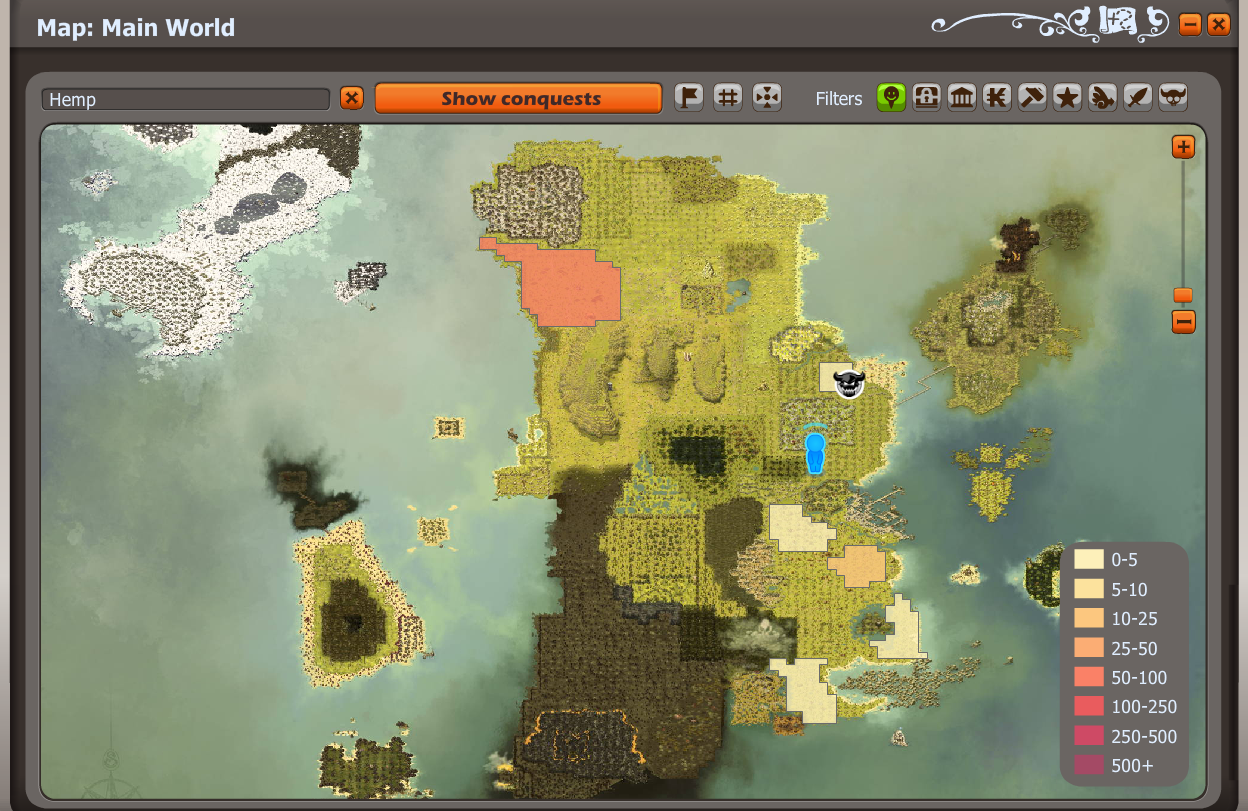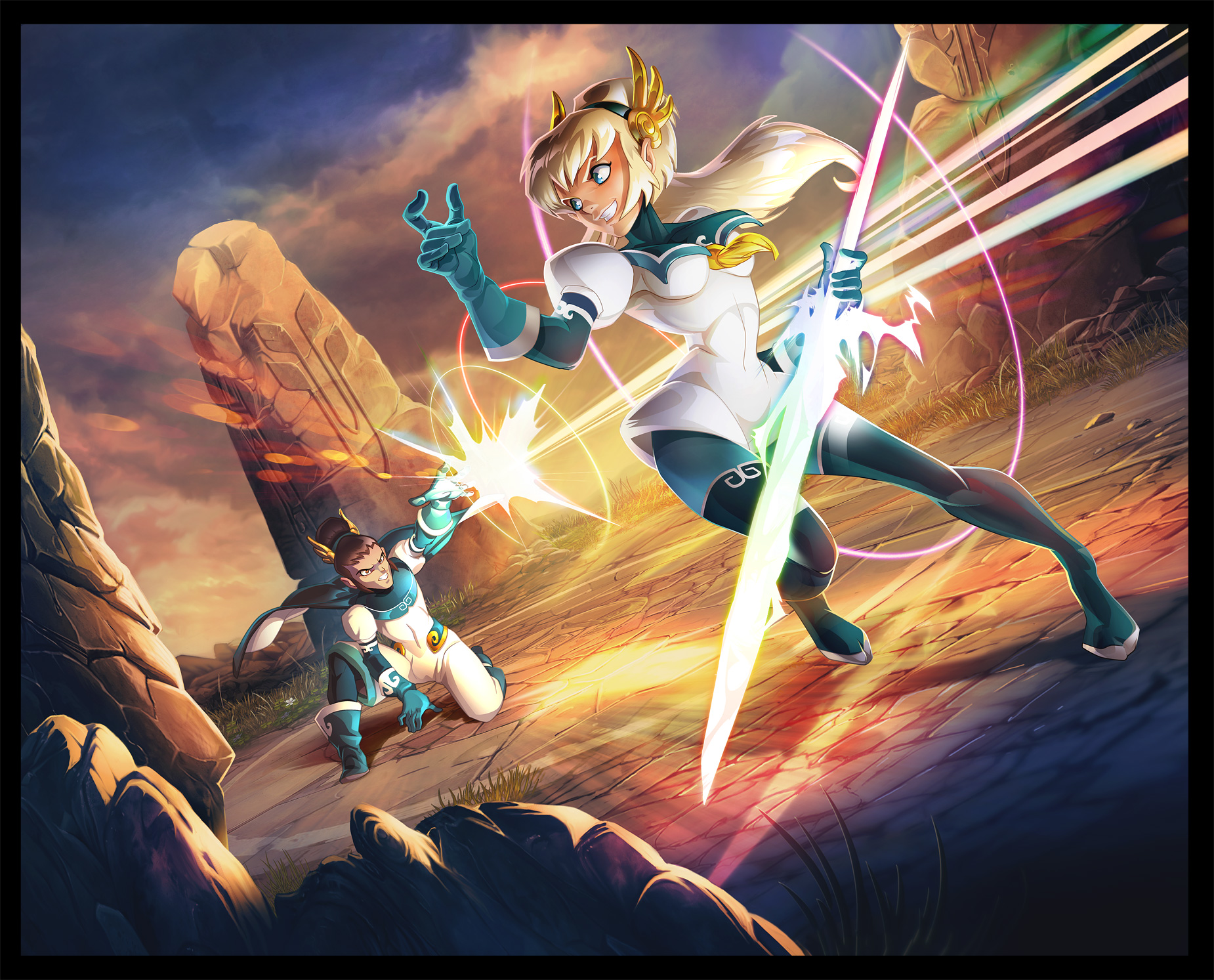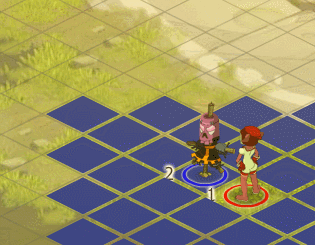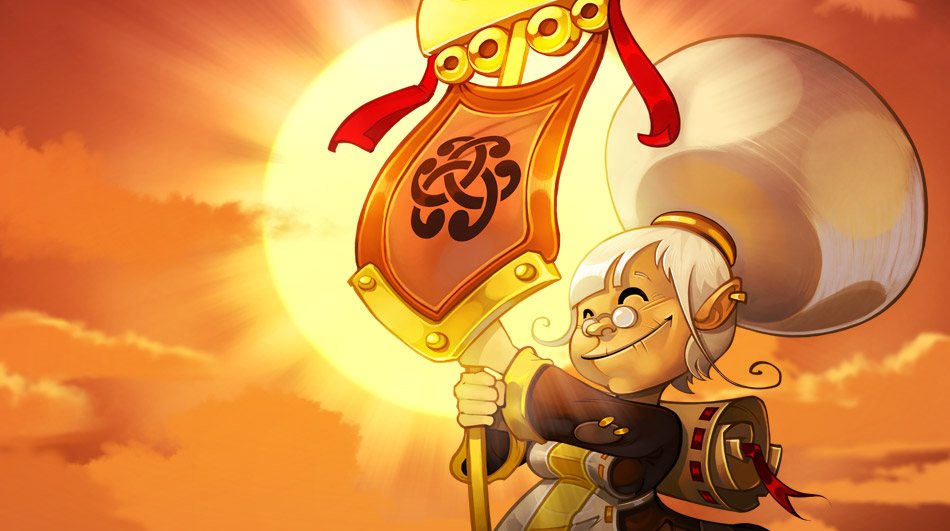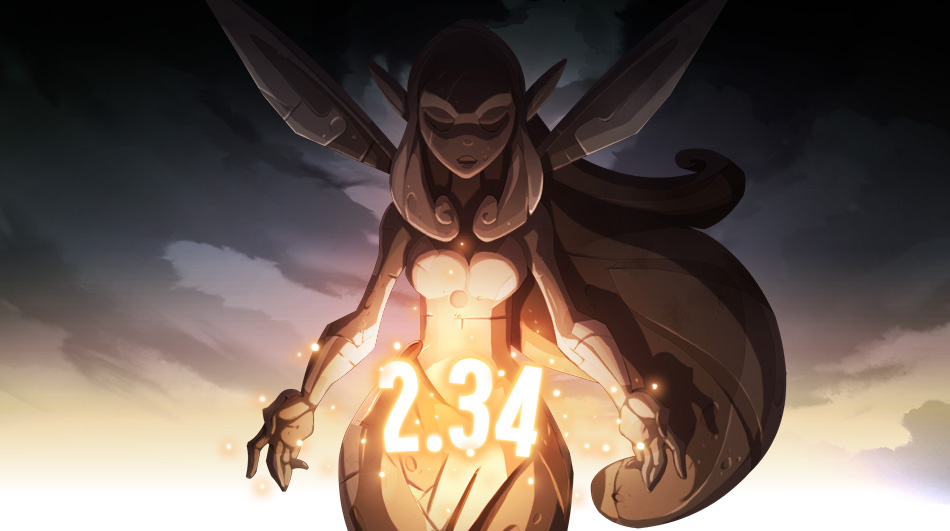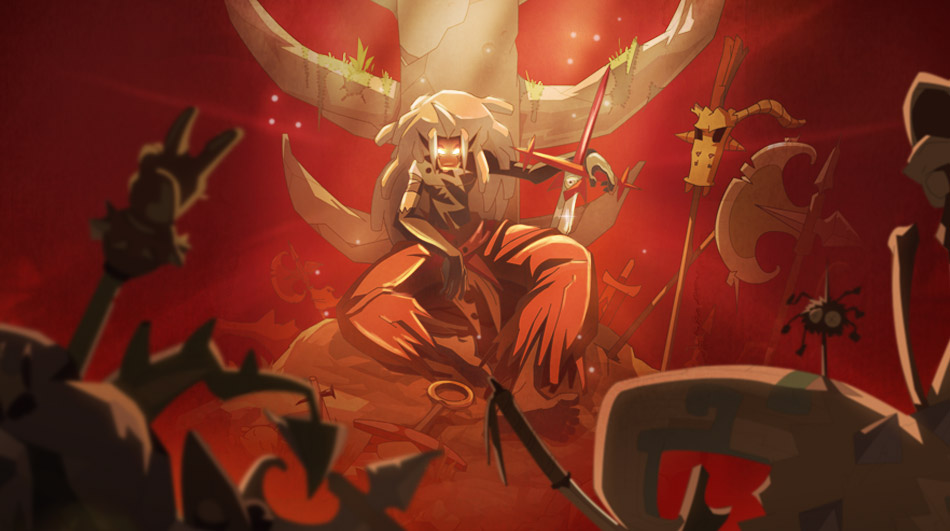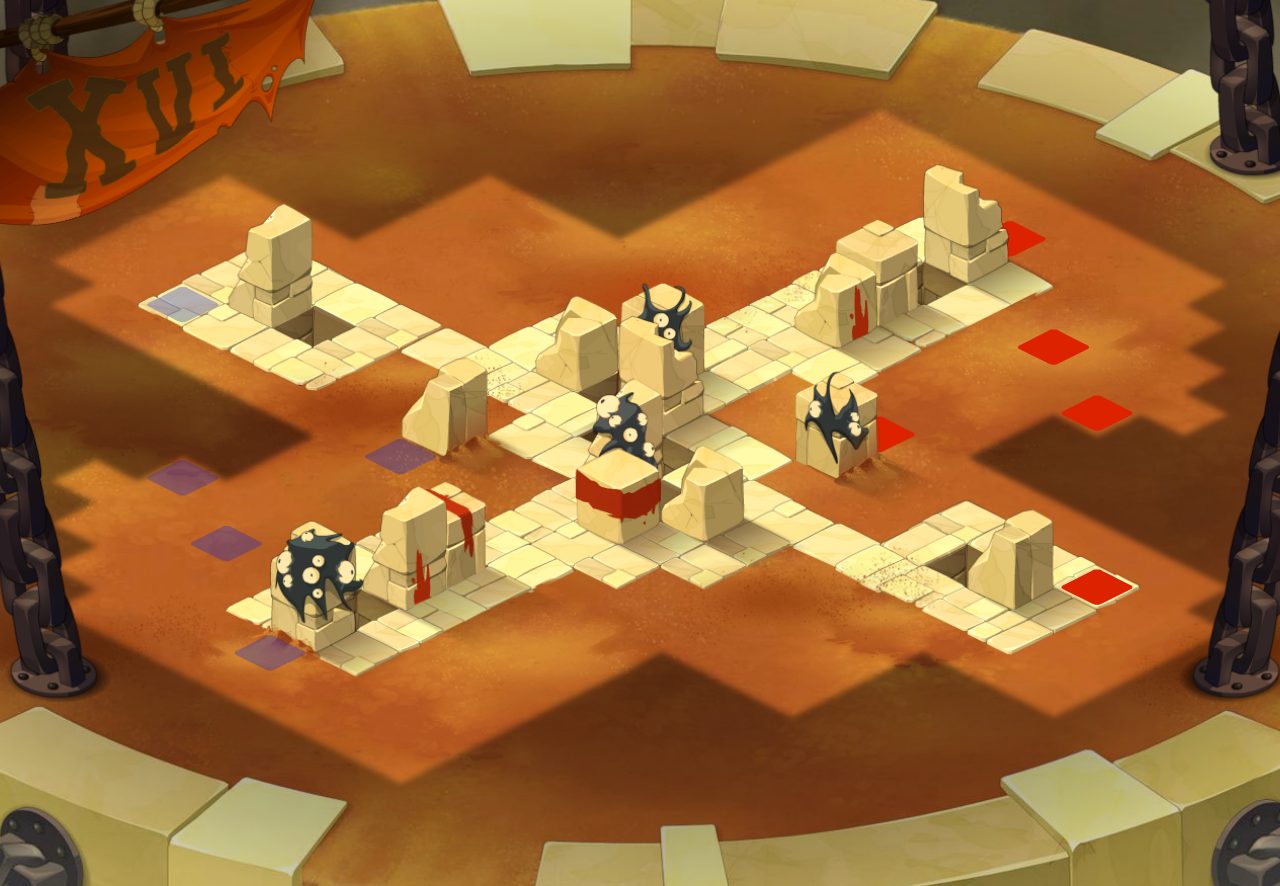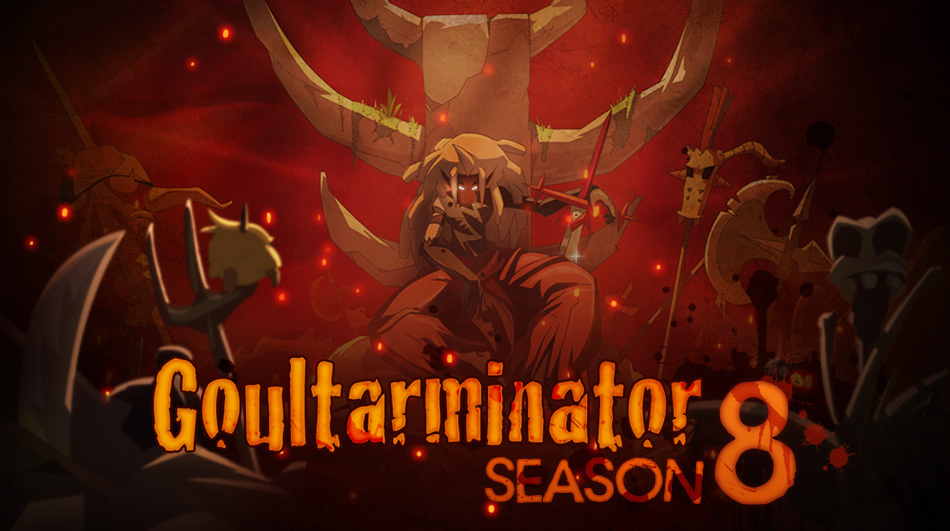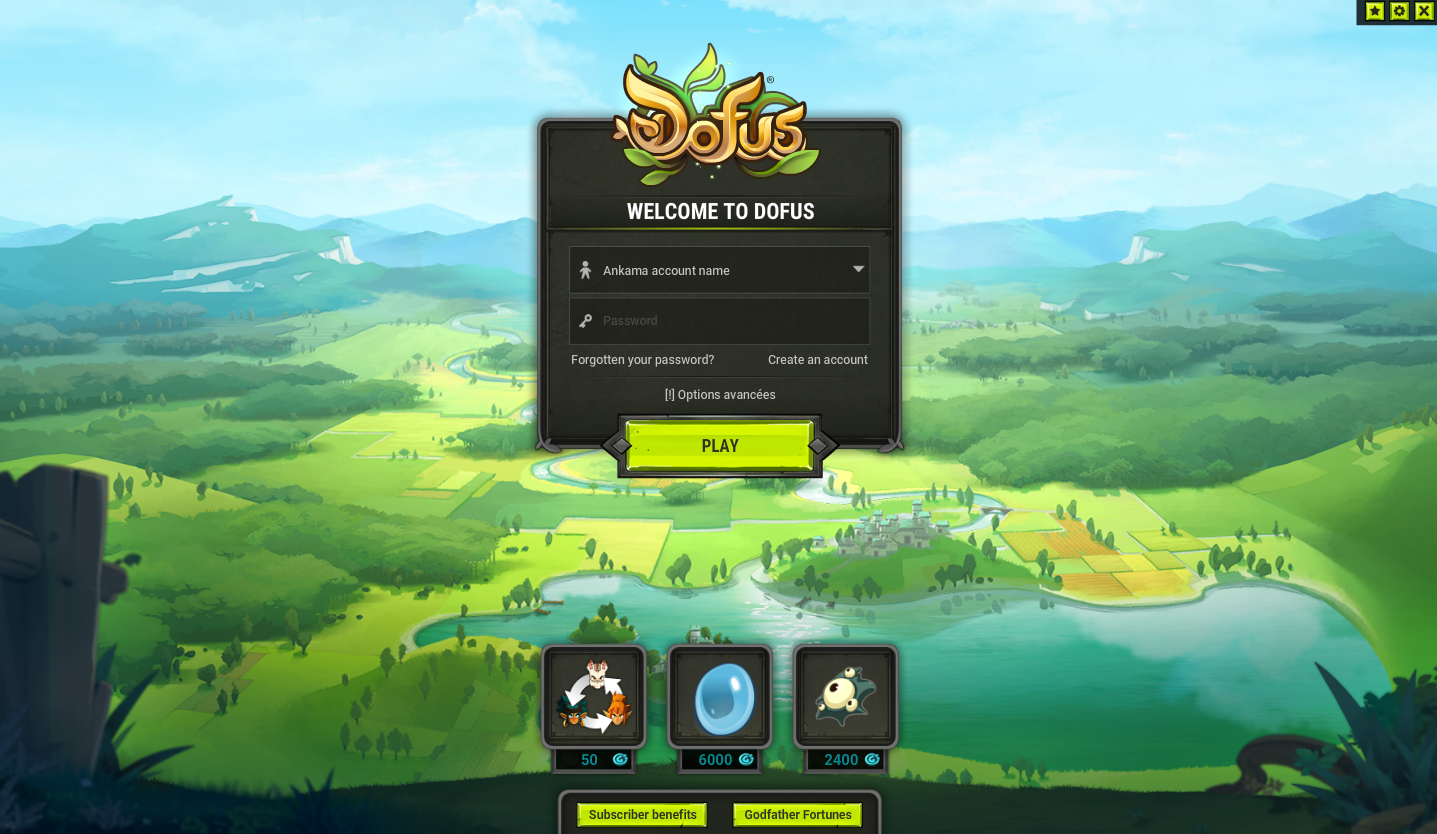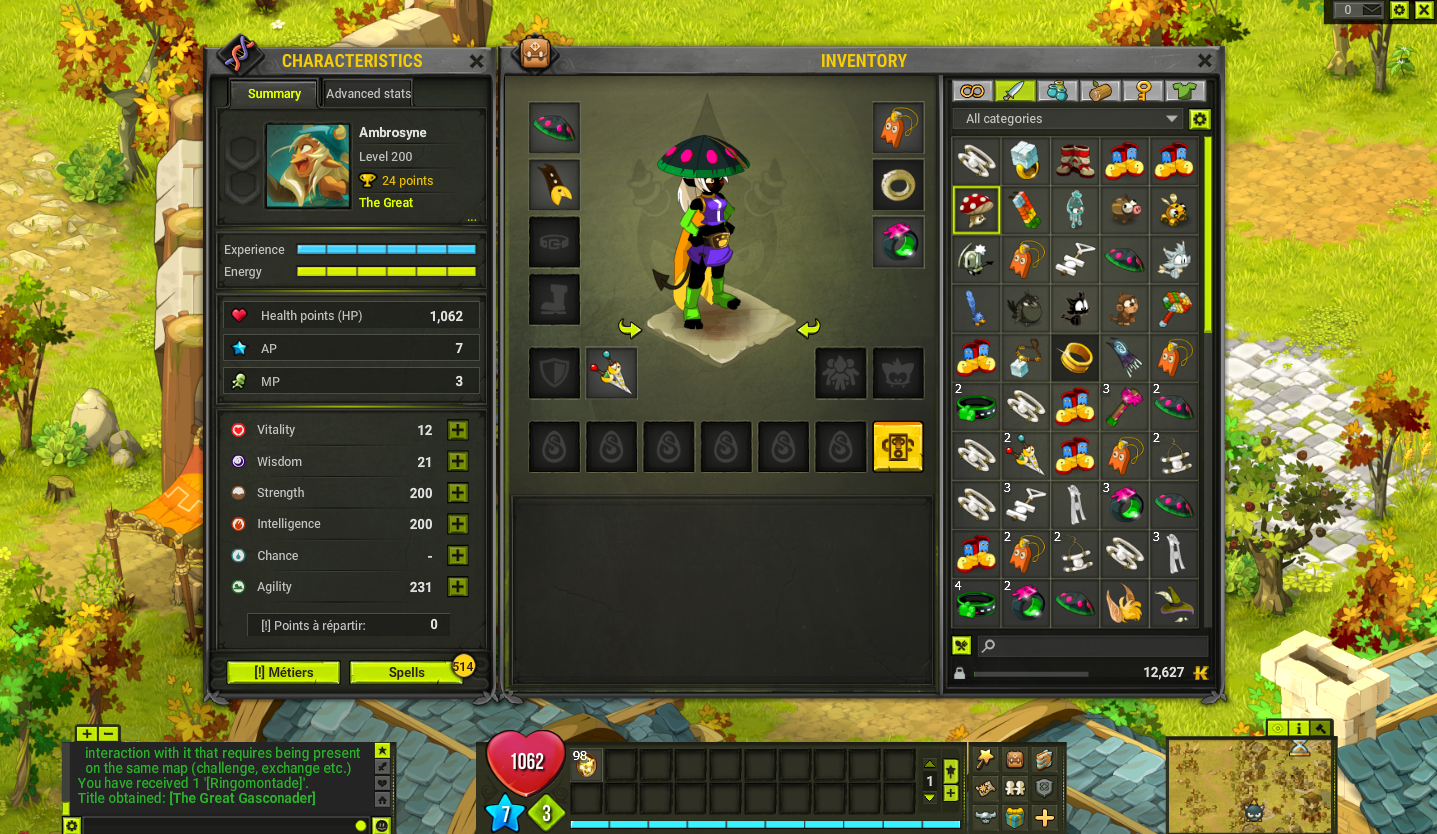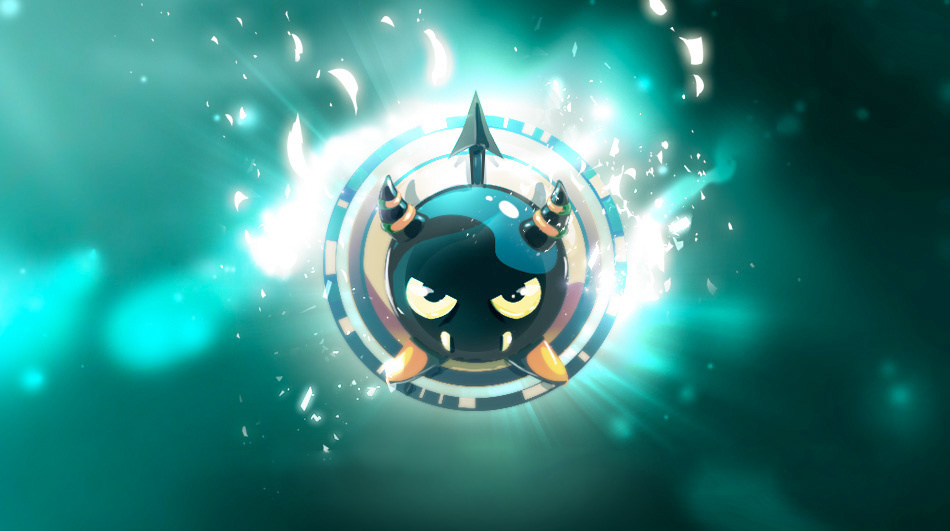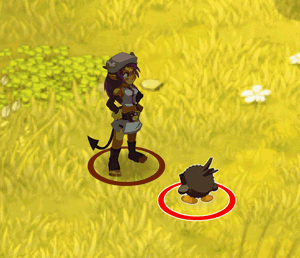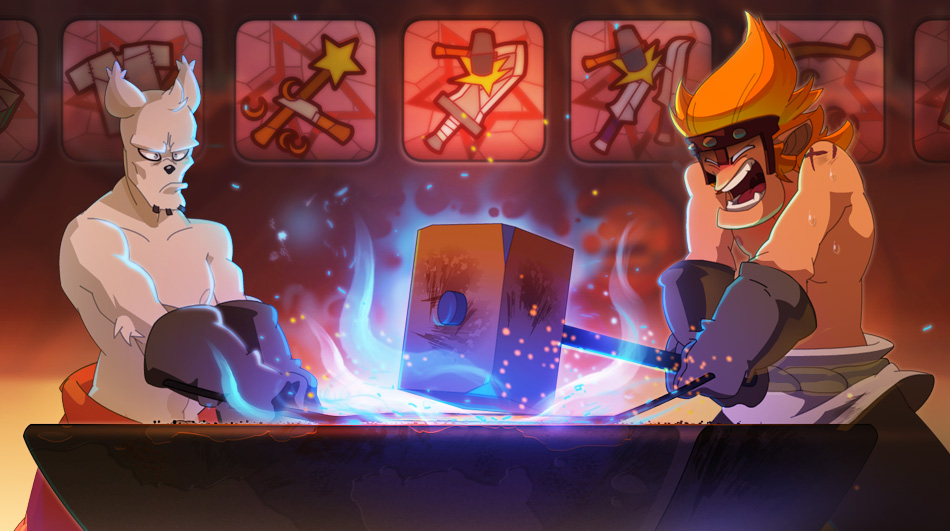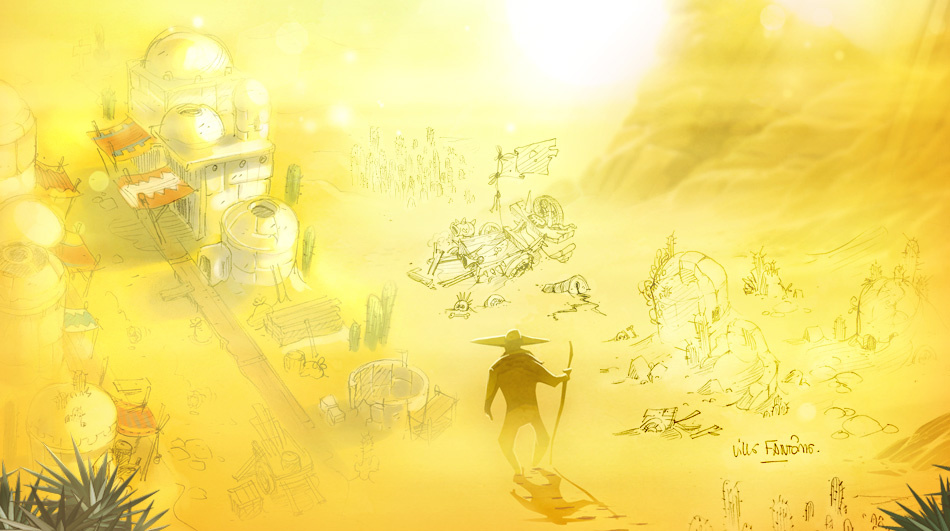As of August 16, 2016, all the game servers are connected to the Inter-Server Kolossium. We would like to give you an overview of the ISK, to remind you about certain aspects of how it works, tell you about some things we’re working on and share our vision for the future of its development with you.
Rating, Matchmaking and Match Quality
The rating system has been given a complete overhaul with the arrival of the ISK. We have replaced the
TrueSkill system with a system based on
Glicko-2.
According to our tests, this new rating system seems to work more efficiently with DOFUS and generates results that appear to be more consistent.
Judging from the feedback we’re analyzing, opting for this new system and pooling characters from all servers has considerably improved the quality of Kolossium fights.
Waiting Time
The average waiting time for a Kolossium fight has been considerably reduced with the ISK. It’s rare that a player has to wait more than a few minutes.
The ratings system we’re using means that there are few “outliers” among the characters (extremely weak or high rating values) and it is therefore more difficult for them to find fights. We are aware of this concern, but, to our knowledge, there is no viable solution to this problem. We are not ruling out the possibility of increasing the rewards obtained for extreme ratings values to partially compensate such players for the long waiting times.
We have recently introduced a system to limit the creation of a team with doubles or triples of the same class in solo mode. This modification has inevitably led to longer waiting times for the Kolossium’s better represented classes. By extension, playing a rarer class may result in you being able to take advantage of shorter waiting times.
Spectator Mode
We were unable to integrate spectator mode for the Kolossium’s fights in time for the ISK release, but we are continuing to work on this feature.
We have planned to carry out two stages:
- Allow players to watch Kolossium fights from their friend list or list of guild members.
- Watch all ISK fights from the associated building.
We are currently working on the first stage, which is more technically approachable, and are hoping to make this feature available before the end of the year.
For the second stage, it will be a much more complex project because the Kolossium’s fight spectator system was not initially designed to handle hundreds of simultaneous fights (furthermore, the interface isn’t suited to this number of fights). We can’t guarantee that it will be possible to roll out a system that allows you to watch all Kolossium fights, but it is a goal we’d like to work towards in 2017.
Bots
Bots can potentially have a considerable impact on the ISK experience. They increase the load on the servers, generate very low quality fights and flood the server with rewards, which reduces the value of these rewards for all players.
We have also taken advantage of the ISK to make big changes to certain mechanisms used to limit their impact. Additionally, we’ve worked on our detection tools so we can sanction bots operating in the Kolossium more effectively.
These actions have considerably reduced their presence in Kolossium fights. However, we do know that this is a permanent and constantly-evolving threat, so we have to remain very vigilant.
Rewards
Our objective is still to allow players who evolve in the Kolossium to earn enough experience to progress and generate enough value to kit themselves out. Ideally, we would like for these characters to be able to evolve almost solely via the Kolossium, on condition that they agree to exchange and trade. At the moment, we find that the experience gained is enough, but we know that the Kolossium is not currently generating enough value for players to get equipment through this activity.
This is a difficult problem to solve, because we have to find additional long-term uses for the Kolossokens. But these uses must not end up competing with other game activities (we don’t envisage getting Boss resources in exchange for Kolossokens, for example). This is a long-term project, during which we are probably going to have to create other rewards or change the recipes for certain items to ensure more permanent destruction of Kolossokens.
In version 2.36, we have changed the way experience, Kama and Kolossoken rewards are distributed to release fewer quantities to low ratings values and higher quantities to larger ratings values. We are not excluding the possibility of changing these reward distribution curves again if we think it’s necessary to place even more value on the higher ratings.
Between now and the end of the year, we are planning to regulate Kolossoken expenditure by adding minimum ratings conditions to obtain certain rewards (accessible with Kolossokens). For example, the NPC Glad Yator could request a (solo or team) rating of greater than 2000 (made-up value) to obtain a Sparkling Pebble.
This change should result in the following benefits:
- Reaching higher ratings values would be encouraged, because you would need them to get more valuable Kolossium rewards.
- With regards to the decorrelation between the value of the rewards and their cost in Kolossokens, currently all rewards that you get via Kolossokens are directly and solely dependent on the value of the Kolossokens. By adding another variable (their accessibility), the Kolossium rewards market could become even richer and more interesting because not all players operating on the ISK will have access to the same Kolossoken transformation capabilities.
- This would prevent fraudulent accounts from generating valuable rewards from the ISK in very short periods of time and with very low efficiency in the Kolossium (low rating).
Surrenders
Some players surrender their fights voluntarily to penalize their allies or because they prefer to suffer a penalty than finish their fight.
This particularly toxic behavior worsens the game experience in the Kolossium and reduces the number of players who visit it. We are taking this issue very seriously and are working on implementing larger penalties for players who surrender their fights.
However, it’s not technically possible to differentiate between someone logging out voluntarily or being disconnected from the game involuntarily. We cannot, therefore, introduce excessive punishments because we run the risk of being too severe when punishing players who suffer from disconnections and are unable to reconnect to the fight.
Getting around Solo Mode Restrictions
Some players are able to get around restrictions in solo mode by controlling several characters in the same team. We hope to be able to deploy a fix for this problem before the end of 2016.
Disconnection and Global Stability Problems
In the first few weeks following the ISK’s launch, on several occasions, the dedicated servers encountered stability problems leading to large-scale disconnections (servers were shut down and rebooted automatically). These problems were primarily due to a sudden load increase on these servers (the Kolossium bots were trying to create several thousand fights in a fraction of a second) and the occurrence of memory losses on the ISK servers.
We have now corrected the problem with the memory losses and connection peaks on the ISK servers should be better managed in the future. We have also added an additional server and improved load distribution between the different ISK servers that host the fights.
Some players do still encounter individual disconnection problems from the ISK (notably those logging in from abroad), and we are continuing to work on fixes on a case by case basis, based on your feedback. Don’t forget to send us the following information if you run into any problems with the ISK: Character name/server of origin/date and time.
Frequently Made Requests
Management of Class Pillars
We are not currently planning to introduce any restrictions on the composition of the classes. The ratings system is meant to allow potentially very effective compositions to go up in the ratings and fight against other high-performing compositions. Without these restrictions, we have a better chance of measuring the effect of the synergies between classes and potentially seeing statistical evidence of an imbalance between certain class synergies.
Ratings Management by Team, Rather Than by Character
We currently have no plans to introduce ratings management by team, rather than by character. Such a system would require storage of a large amount of data and, for some characters who play in different teams, it would be too difficult to rate their performance (insufficient number of fights for each team in which they play).
Availability of Statistics
We are not currently planning to make statistics about the ISK available (by API or otherwise). We are continuing to concentrate our efforts on improving the ISK.
Registration of Two Characters in the Kolossium
We do not plan to offer the option of registering a group of two characters. Such a feature would mean longer waiting times and lower quality fights (you would have to wait to find another team with two opponents and two solo characters).
Alternative Formats for the Kolossium
The Kolossium system is not yet ready to welcome different team formats (1vs1, 2vs2, 4vs4, etc.) and this would run the risk of increasing waiting times to find fights.
However, we are not ruling out the possibility of creating temporary leagues (alongside the current 3v3 format) in different formats to test their viability in the long-term. There are no such plans for 2016, though.
Registration of a Team with Characters from Other Servers
We can’t offer you the option of registering a team with players from other servers. We would need to make considerable modifications for a feature like that. For example, friend lists would have to be managed in real time across all game servers.
Displaying the Server of Origin
The “/whois” command has recently been updated and is now able to display the name of a character’s server of origin. We don’t want to display a server “Tag” (like the one used on the BETA server) in front of the characters’ names, because this feature doesn’t seem to be very meaningful and sometimes creates problems with certain interfaces.
Prioritize the Creation of Teams with Members from the Same Server and Keep the Group in Solo Mode
Such a feature could lead to an increase in waiting time between fights and reduce their quality. We do, however, agree that the possibility of keeping a Kolossium group after a fight is a very socially interesting feature of the Kolossium, but one that has disappeared with the ISK.
We are still looking into whether or not it’s possible to prioritize creating teams with members of a same server without significantly affecting waiting times.
Kolossium Achievements
Our position on this matter hasn’t changed. In the long-term, we want to add Kolossium Achievements, but we want to be very careful about how they work to prevent players who want to obtain them from penalizing their team by getting distracted from the main objective of ISK fights (defeat their opponents to win). We could potentially add “basic” Achievements that reward the number of victories and the diversity of fights undertaken. We will avoid Achievements that would be easier to complete after having artificially reduced your rating through defeats (“consecutive win” type Achievements, for example).
Rewards for Losers
We still don’t intend to give out rewards for the losers (depending on the number of opponents defeated), because we don’t want such a system to result in simplified agreements between opposing teams or to distract players from their main objective (ensure a maximum number of opponents is defeated, rather than trying to win the fight).
Seasonal System
We are not ruling out the possibility of introducing a seasonal Kolossium system in the long-term, including resetting the rankings and rewards at the end of the season. However, we would prefer to focus on stabilizing the ISK before planning this type of possibility.
League Systems
We would like to add an additional league ranking with honorary and cosmetic rewards to the current KIS rating ranking. However, we still haven’t decided how such a system would work or planned its development. For the time being, this is just an interesting concept for us. We think that players should be able to display their ranking on the ISK in-game and in several ways.
Web Ranking
Ratings rankings on the official website are being updated and should be working soon.





